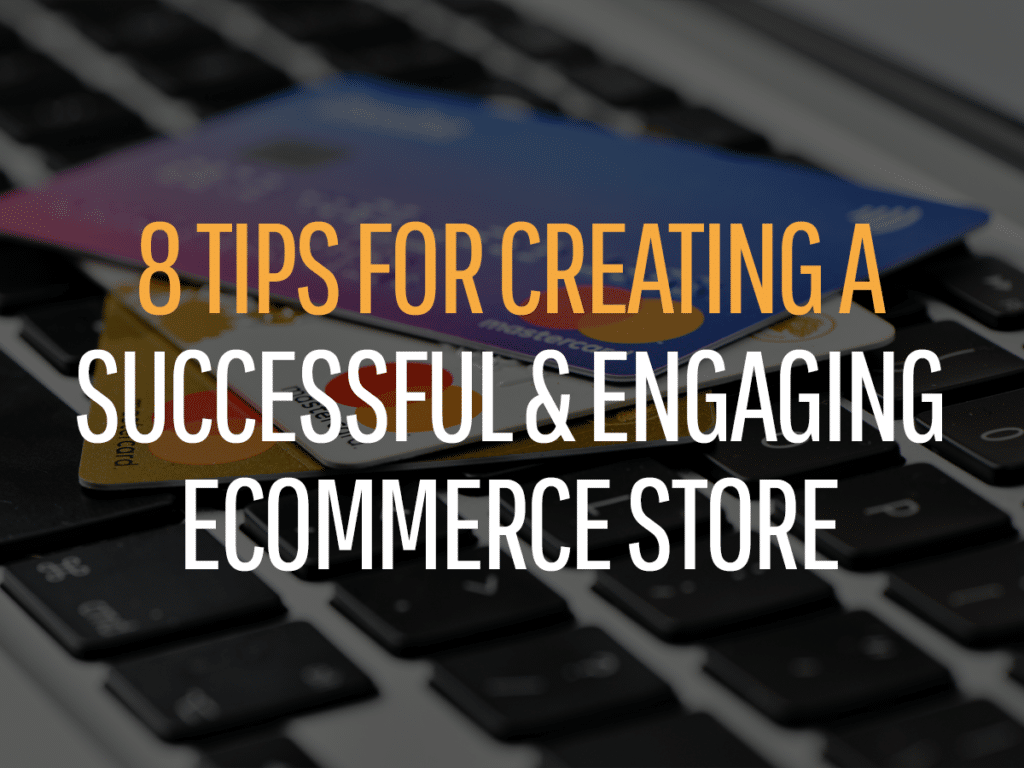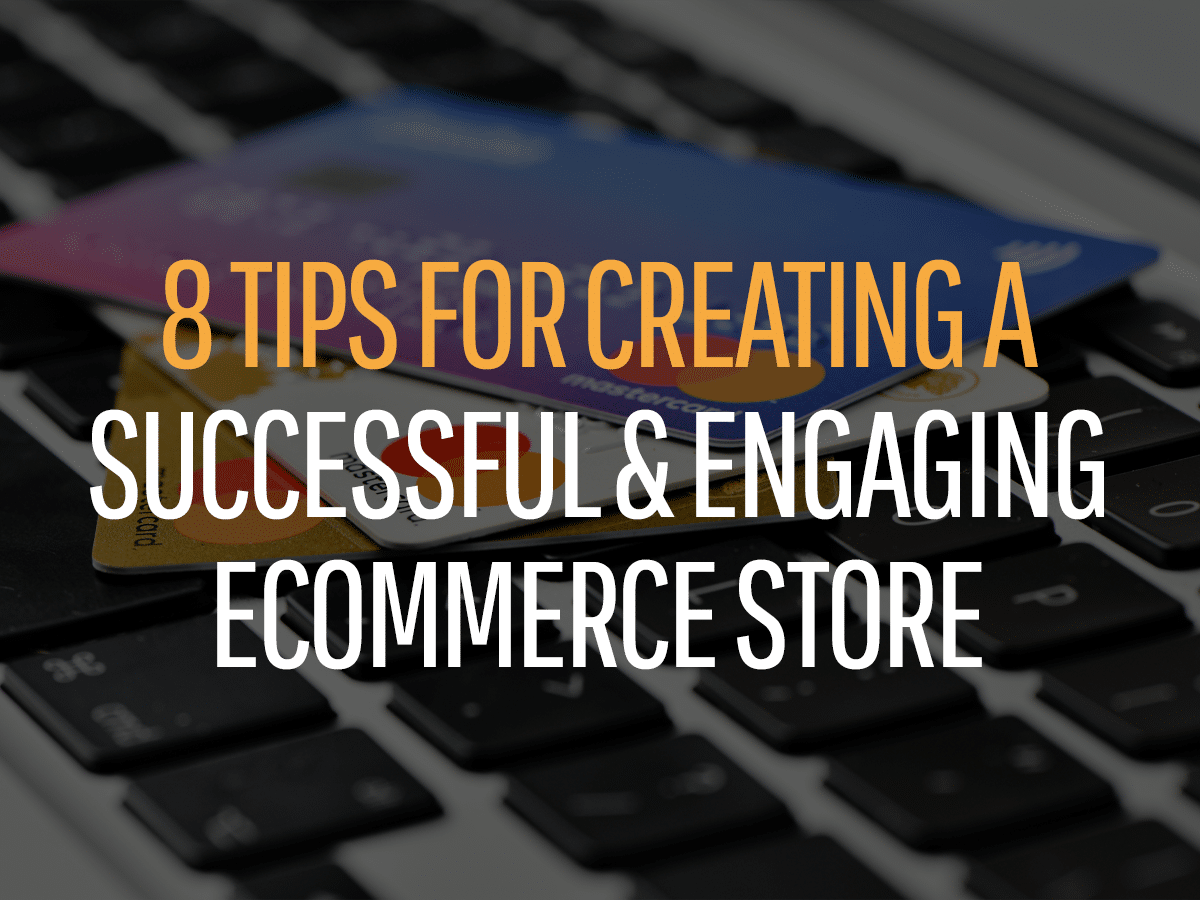Creating an Engaging Ecommerce Store
Online marketplaces like Amazon and Etsy could be a good way to test the market for a new product. Using these platforms, you can quickly start a new online business with minimal expenses and setup requirements. That convenience, however, comes at a cost. Not only do these companies take a cut from your sales but also your autonomy. As a business, you would be subject to the platforms’ processes and restrictions, which leaves you with limited opportunities to build a brand.
In contrast, having your own e-commerce store enables you to control every aspect of your business. You can offer personalized customer experiences, customize transactional emails, and really pursue your own vision of how your products should be presented. You’ll also have better opportunities to engage with your customers and, consequently, keep their business for the long term.
Having your own engaging eCommerce store site definitely has its advantages. But not many aspiring digital merchants know how to start a successful online store. Although there’s really no magic formula for e-commerce success, here are a few tips that will give you the best chances possible:
1) Make your web design engaging
An e-commerce store is not merely a platform for selling your goods and services, but a means to capture your audience’s interest and offer an exceptional customer experience. Whether you want to code it yourself, purchase a template, or hire a professional web developer, see to it that your web design is engaging. Every detail—from the general layout to the fonts you select for every piece of text—should reflect your brand as well as be visually appealing to your audience.
Apart from visual appeal, a well-designed eCommerce store significantly contributes to your audience’s perception of your credibility. In fact, based on a study review published by the Journal of Medicine and Life in 2016, as much as 75% of your visitors will judge your company’s credibility based on design and presentation alone. Make sure you design not just for engagement but also for confidence and trust.
2) Ensure a good mobile experience
The prevalence of connected smartphones and other mobile devices has empowered the average consumer with better access to products and information. People are increasingly relying on their phones to buy products online. Even those who prefer to checkout on their desktops do much of their browsing on mobile.
As much as 79% of smartphone users report successfully using their mobile devices to buy something online within the last 6 months. Given this figure, providing a good mobile shopping experience will not only contribute to your brand’s credibility but also overall sales.
3) Use unique and captivating visuals
The photos and graphics you use on your online store will contribute significantly to customer engagement. Select images that are not only consistent with your brand but also relatable to your target audience. When possible, use videos and other multimedia to communicate important messages.
Good quality images are especially important on product pages. Remember that those photos will replace the actual product inspection your customers would have had the opportunity to do at a physical store. Make sure you offer as much detail as possible. Additionally, consider featuring people in your images because photos with faces are 38% more likely to engage digital audiences.
4) Prepare a compelling “About Us” page
Your “About Us” page plays a huge part in cultivating trust and brand affinity. Always keep in mind that people like to support brands they can relate to. They look for similar values and a likable personality. Ultimately, they look for authenticity.
Rather than rambling about your history and accomplishments, use this space to address what your customers are looking for in a company. Talk about your mission, the causes you support, and the values wouldn’t compromise on. It is also the best place to show why you’re in an excellent position to address your customers’ pain points.

5) Publish reviews by real customers
Place real reviews on your website and on relevant product pages. This is a good way to encourage visitors to push through with a purchase. As much as 88% of online consumers treat online reviews just like personal recommendations. What’s more, buyers spend approximately 31% more on businesses when they see excellent reviews.
Given these benefits, you should make it a priority to gather authentic reviews from real customers. Customers often forget to leave reviews when everything turns out fine, so it helps to send them a gentle reminder. If possible, give them an incentive to provide useful feedback.
6) Offer excellent customer service
Customer service isn’t just critical for returns and the after-sales process. True customer-centrism can be found in your effort to be communicative and perceptive. Think of what your customer’s concerns might be at every stage of the buying process, and address those concerns without waiting for the customers to ask.
For example, send out transactional emails that are complete with all pertinent details, including when customers can expect to receive their packages. This seemingly small detail will put their minds at ease when shopping with you and will make them more likely to shop with you again.
Additionally, you’ll be able to offer better-quality service by making yourself available for any kind of support your customers might need. If you can, make on-site engagement possible through live chat or a carefully programmed chatbot.
7) Encourage social sharing
Make it easy for your visitors to share your content on social media. Better yet, encourage them to do so through well-placed buttons and carefully crafted calls to action. Each time a person shares your product to their social network, it is essentially an advertisement for your business. More than that, it is a personal recommendation. Because 74% of consumers use social media platforms to guide their buying decisions, prioritizing social sharing can go a long way in terms of building your brand and generating sales.
Additionally, your eCommerce store should also be supported by a solid social media presence. Through your official accounts, you can better communicate with your target audiences. These marketing assets will also make you better able to stay on top of the conversations surrounding your brand. You can use your customer reviews on social media advertising.
8) Maintain an informative blog
An engaging eCommerce store doesn’t typically give you plenty of opportunities to publish content, so maintaining a blog will allow you to keep your customers engaged with fresh and up-to-date news. Every piece of blog content is a new opportunity to gain targeted traffic. Not only will you have more text for your audience to share and link to but also for search engines to index and make your website more valuable from an SEO perspective.
When done correctly, having a blog on an eCommerce website will also do wonders for your brand. Every post will give you a chance to establish your expertise in your niche and bring positive attention to your business. Additionally, your blog can work hand-in-hand with your newsletter campaign and social media marketing efforts.
—
There’s no guaranteed effective manual for how to start a successful online store. Your performance will depend on many factors, including the value of your products and services, the presentation of your brand, and the effectiveness of your marketing campaigns. Nevertheless, these ten tips are proven-effective best practices that will enable your business to stand out and compete at the highest levels of your chosen niche.






